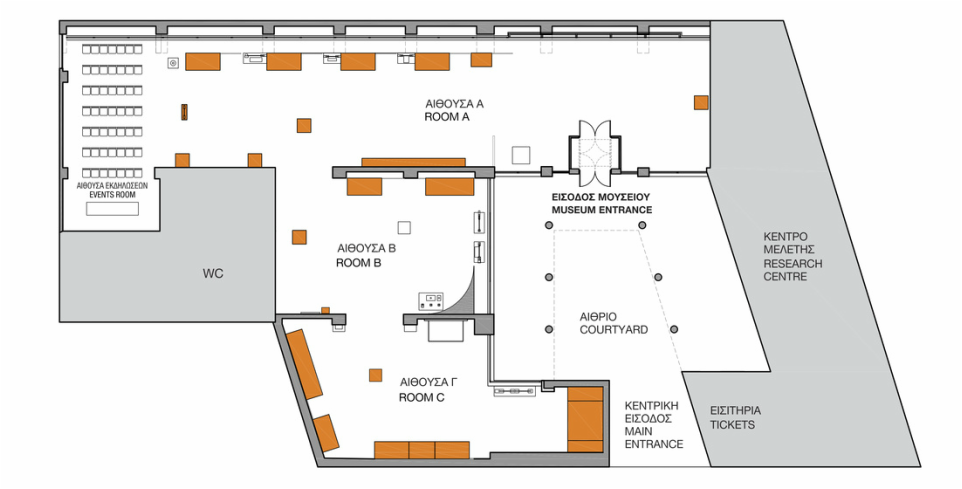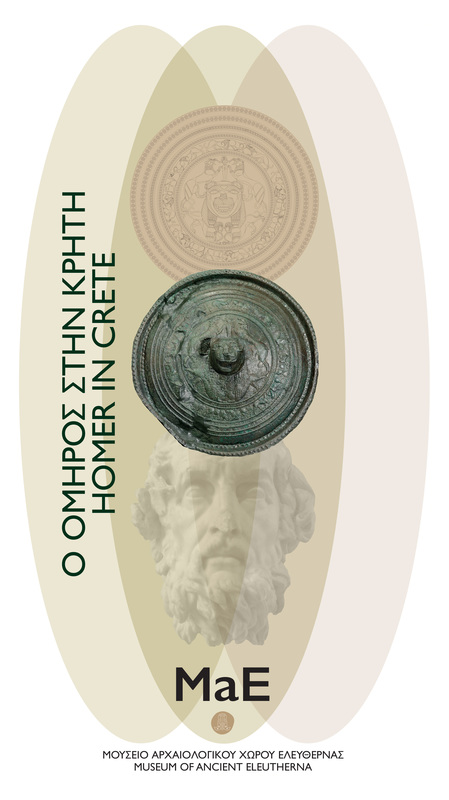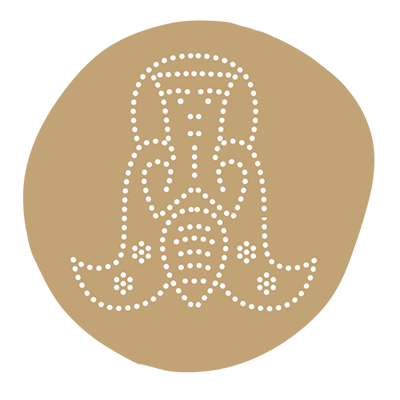
The ” Museum of ancient Eleutherna – Homer in Crete” was created to accommodate the results of the excavations carried out for thirty years in the ancient city .
It is a modern building approximately 1,800 sq.m., which together with the surrounding area occupies 13 acres, and remotely resembles an ark that emerges from the earth, gazing Ida (Psiloritis). It is divided into two wings with the right one on the ground floor for hosting the guards – ticketing area, and the Study Centre in the left area of the exhibition halls of the museum. The architectural project was designed on a human scale, related to the natural environment, while at the same time as modern edifice is absolutely distinct and recognizable of the era in which it was created.
The large surrounding area in front of the museum features, gardens, trees, a small parking for people with disabilities, and especially paved surfaces with special provisions.
On the back of the building there is a car parking. In the wide space (courtyard) on the east side of the museum a natural outdoor theater was formed, for the holding of events and for the enjoyment of nature and the contemplation of aetokathistras Ida (Psiroreiti) and its peak, where the father of the gods was born, Jupiter, in the Ideon Antron. Everywhere there are trees, plants, and herbs typical of the Cretan flora from antiquity to the present day.
The underground spaces throughout the building house warehouses and modernly equipped laboratories.


Exhibition Layout and Museugraphical Program
In planning a museum –especially a museum for an archaeological site– one takes into account many parameters, including its purpose, layout, and requirements. Primarily, however, one is concerned with what the museum will represent. Each region had its particularities in antiquity, its strong points, for which it stood out, and these should be taken into account.
Ancient Eleutherna was not chosen fortuitously as the excavation site of the University of Crete. To the powerful image of Crete’s Minoan civilization and its palatial centres, the excavation of the city of Eleutherna would add the second component of Crete’s history: the historical period, from the Early Iron Age to the Byzantine period. Even if ancient Eleutherna unfolds its secrets from approximately 3000 BC to the 14th century AD, by a stroke of good fortune, excavations at the Orthi Petra cemetery shed light on much of the so-called ‘Dark Ages’ (9th-6th c. BC), which correspond to the dawn of Greek civilization, the period referred to by Homer in his poems the Iliad and the Odyssey.
The finds from this cemetery illustrate the Homeric verses: the funerary pyres as described in the Iliad, particularly in the passage narrating Patroclus’s pyre (Book XXIII), thus vindicating Aristotle over Plato for accepting the epic verses as based in truth; the description of Achilles’s shield (Book XVIII); aspects of the Homeric daita (diet); but also the travels and trade contacts across the Mediterranean recounted in the Odyssey.
For these reasons, the current exhibition focuses on Homer in Crete and Eleutherna. Although all periods are represented, Homer and his relation to Eleutherna is the exhibition’s backbone, connecting thread and protagonist. Museums throughout Greece showcase prehistoric and historical artefacts, but no other museum focuses on the dawn of Greek civilization and Homer. Crete can now stand firmly on two feet: the Minoan civilization and Homer. These are the strong points in its ancient history.
